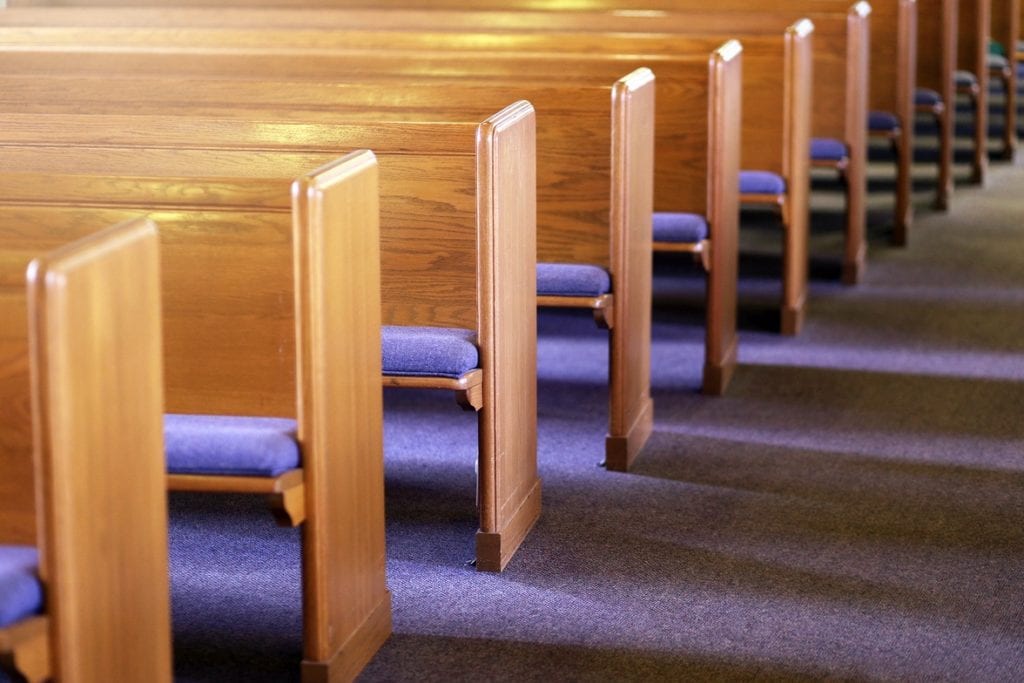
As with any other property, regular maintenance of your church building is very important, not only to ensure safety and sanitation but also to help preserve its value over time. Routine maintenance and inspection will help you identify and address small issues before they escalate into bigger problems that will need costly repairs.
In addition, churches are more than just buildings to their congregation. They are considered sacred and solemn places of worship where they can go for prayer, meditation, and solace. As such, it’s important to keep your church clean, orderly, and well-maintained.
To guide you in maintaining your church property, keep a checklist of routine maintenance activities that you and your staff can refer to. Maintenance needs vary based on factors like age and location, but there’s a wide range of basic upkeep activities that need to be done regularly regardless of your building’s features.
- Roofing
Going up the roof for routine inspection or maintenance can be dangerous for amateurs, so it’s best to hire a pro to do this for you. It’s ideal to do this semi-annually to check on the following:
- Damaged or missing shingles, slates, or tiles
- Leaks and cracks
- Corrosion
- Moisture and dampness in wooden structures
- Bats or rodent infestation
- Accumulated dirt and debris
- Walls and exterior building condi
Upkeep for the walls on a new building is pretty straightforward. It’s a different story with an old or historic building, however. The walls of a historic building play a large role in defining its character, so you’d want to preserve that as much as possible. Ideally, your church’s walls and exterior should be checked quarterly, but for a historic building that has seen much more wear and tear, you may need to do this more frequently.
These are some of the things to look into:
- Damage or cracks on walls
- Loose or missing siding, panels, or trim
- Rodent and termite infestation
- Water penetration or water damage
- Damage or crack on joints of brick and stone walls
- Loose screws and nails
- Eaves and gutters
While part of your roofing system, eaves and gutters need to be checked separately to ensure they’re still effective in protecting your building from water damage. Have them checked every quarter for the following:
- Accumulated leaves and dirt
- Tree limbs, birds’ nests, and other debris that can block the flow of water
- Loose components
- Rusting
- Rodent infestation
- Doors and windows
A church’s doors and windows are more than just functional parts of the building. They also often have a decorative purpose and are integral components of the building’s design. They’re also important to the security and safety of your church.
If your church is in a historic building with the original doors and windows still intact, you will need more frequent inspections and maintenance to mitigate the effects of wear and tear. Stained windows also need special care and attention.
Because they’re used frequently and are exposed to the elements, it’s best to do routine check-ups and maintenance on your doors and windows every week. These are some of the things to watch for:
- Missing or damaged weather stripping
- Loose, missing, or damaged thresholds
- Broken or cracked glass
- Weather damage and wear and tear
- If the window has metal parts, check if they have expanded and are causing damage
- Condensation on window panes, particularly colored ones
- Loose, damaged, or rusting hinges
- Damaged or malfunctioning locks and other hardware
- Door Sills should be flushed with the floor or has a variance of no more than ¾ inch
- Make sure doors and windows can be easily operated
- Make sure doors that serve as fire exits are clear of blockage
- Church grounds
Your church grounds are what people will first see of your church and play a big role in the first impression you make. Well-maintained and attractive grounds can also help foster positive feelings and a sense of harmony.
Just like a home’s backyard, daily cleanups and inspections may be needed to keep the grounds clean and safe from potential hazards, but routine maintenance activities may be done at least once a week.
Here are the things to watch out for:
- Potholes and cracks on paved surfaces that can cause slips and falls
- Drainage problems on the landscaping
- Moss on pathways and paved surfaces
- Rot and disease on trees
- Tree branches or shrubs that block pathways
- Snow or ice that may cause slips and falls
- Cracks, debris, or damage on steps
- Outdoor lighting fixtures are protected from the elements or vandalism
- Sufficient exterior lighting is in place and in good condition
- Shrubs and trees around doors and windows should be trimmed
- Lawn sprinklers are in good working condition
For more church maintenance tips, check out our blog.
If you’re looking to buy or sell a church property in the Chicago area, get expert assistance from Church Building Consultants Realty. Call them today at 630.344.9449 or send an email to Dan(at)ChurchBuildingRealty(dotted)com

